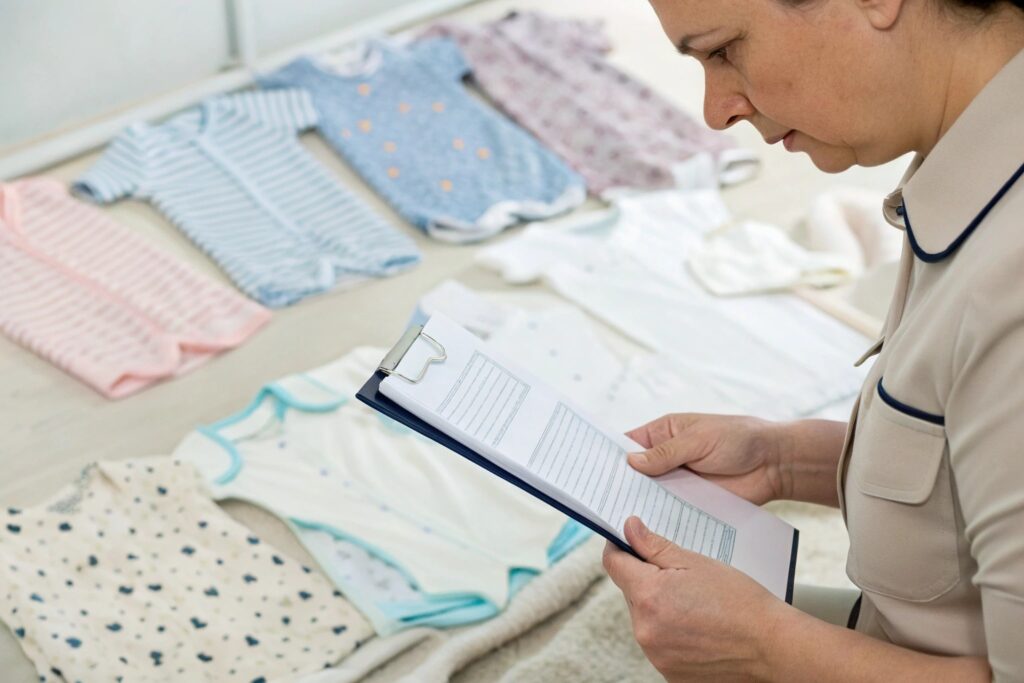Starting your first babywear production run is a big step—and preparation is everything. Without the right groundwork, small errors can turn into costly delays or compliance problems.
Before starting a babywear production run, you’ll need finalized tech packs, approved samples, compliance certifications, and clearly agreed production timelines and MOQs.
Here’s how to make sure you’re fully ready for a smooth and successful launch.
How to Finalize Tech Packs, Size Charts, and Fabric Selection?
Clear, complete product specifications are the foundation of any successful production run. If you skip this step, expect confusion later.
To finalize your babywear production, you must complete tech packs with detailed measurements, approve final fabrics and trims, and lock in confirmed size charts for all age ranges.

Checklist for readiness:
| Item | Why It’s Essential |
|---|---|
| Tech pack with full specs | Defines stitching, fabrics, trims, fit, care labels |
| Finalized size charts | Ensures correct grading for all baby sizes |
| Fabric and color swatch approvals | Avoids dye lot and material confusion |
| Trim approvals | Snaps, zippers, tags verified for safety |
| Packaging requirements | Bags, tags, barcodes, ready for fulfillment |
Without finalized details, factories may "guess"—leading to costly misunderstandings.
At Fumao, we run a Final Production Readiness Review with every client before green-lighting mass production.
Why Pre-Production Samples Are Critical for Babywear Orders?
A pre-production sample (PPS) isn’t optional—it’s your last checkpoint before hundreds or thousands of units are made.
Pre-production samples are critical because they confirm the final fit, stitching quality, fabric feel, print accuracy, and compliance labeling before full production begins.

What PPS approval covers:
| Element Checked | Why It’s Important |
|---|---|
| Fit and sizing accuracy | Ensures age-appropriate wearability |
| Fabric weight and handfeel | Matches the sample stage expectations |
| Stitching and construction | Confirms durability and comfort |
| Snap/button testing | Critical for babywear safety compliance |
| Labeling and tags | Meets CPSIA, REACH, GOTS standards |
Best practice: Never allow bulk production to start without written PPS approval.
We recommend clients keep a signed, dated PPS as a reference in case of any future production or quality disputes.
What Certifications and Compliance Tests Are Needed for Safety?
Safety isn’t just a selling point—it’s a legal requirement for all baby clothing sold in developed markets like the U.S. and Europe.
For babywear production, you need certifications like OEKO-TEX® Standard 100, GOTS for organic claims, CPSIA compliance for the U.S., and EN 14682 for Europe, plus testing for chemical residues and mechanical safety.

Key certifications needed:
| Certification/Test | Purpose |
|---|---|
| OEKO-TEX® Standard 100 | Tests for harmful substances in textiles |
| GOTS Certification | Verifies organic status and ethical production |
| CPSIA Compliance (U.S.) | Regulates lead, phthalates, labeling for children's products |
| EN 14682 (EU) | Regulates cords and drawstrings for babywear |
| Flammability Testing (ASTM F1816) | Required for sleepwear safety |
We also recommend optional third-party chemical testing (SGS, Intertek, TÜV SÜD) for extra buyer confidence.
Fumao provides compliance document packs ready for customs clearance and large retailer submission.
Tips for Setting Clear Production Timelines and MOQ Expectations?
Without a shared calendar and quantity expectations, production can stall, rush, or disappoint. Planning is crucial.
Set clear production timelines and MOQs upfront to align on sampling approvals, raw material bookings, factory space allocation, and delivery planning.

How to organize production timelines:
| Task | Recommended Timeframe |
|---|---|
| Finalize designs and tech packs | 1–2 weeks after initial brief |
| Sampling and revisions | 4–8 weeks depending on complexity |
| PPS approval deadline | At least 2–3 weeks before production starts |
| Bulk production time | 6–10 weeks after PPS approval |
| Shipping buffer time | 3–6 weeks depending on method/location |
- Basic items (e.g., bodysuits): 300–500 pcs per style per color
- Complex items (e.g., jackets, dresses): 500+ pcs per style
Always clarify:
- MOQ per color, not just per style
- Size ratio splits (e.g., 2:2:2 for 3M/6M/9M)
At Fumao, we create a Production Timeline Chart so you know exactly when sampling rounds, production, and shipping milestones occur.
Conclusion
Before starting a babywear production run, you need more than just a good design—you need finalized tech packs, approved samples, compliance certifications, and clear production planning. Preparation isn’t extra work—it’s the insurance policy that protects your brand’s launch, reputation, and growth.










